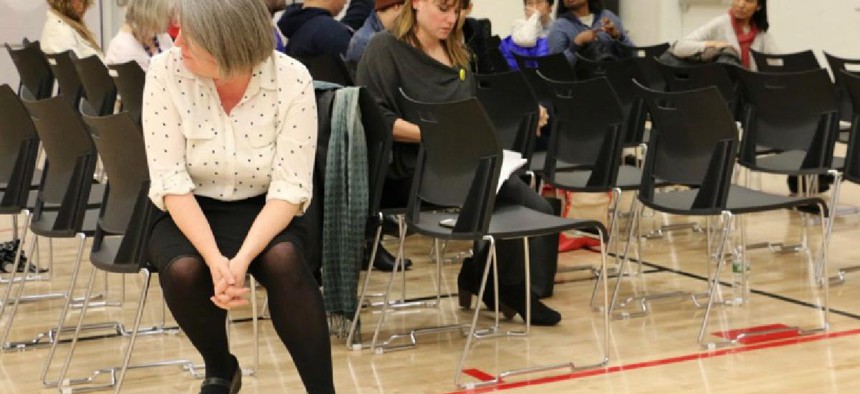The next New York City school district to come up with its own plan to combat school segregation could be Manhattan’s vast District 2, where some schools do not reflect the district’s diversity.
At a public forum Monday about integration, parent leaders argued that the selective admissions systems used by many of the district’s middle schools have worked to sort students along race and class lines.
For instance, East Side Middle School on the Upper East Side, which admits only high-achieving students, is 83 percent white and Asian and just 11 percent low-income. But City Knoll Middle School in Hell’s Kitchen, a new school that accepts any District 2 resident who applies, is just 28 percent white and Asian and 73 percent poor. (Overall, the district’s middle-school students are about two-thirds white and Asian and 44 percent low income.)
Several districts across the city are probing the link between school admissions policies and segregation, and considering alternative enrollment systems that would promote diversity. Now some parent leaders are hoping that District 2, which includes some of the city’s wealthiest enclaves and its most sought-after schools, will join them.
“There are so many ways to skin this cat,” Shino Tanikawa, president of the district’s community education council, told the crowd Monday. “The first thing we have to do as a district is at least start the conversation on diversity.”
Districts 1 and 3 in Manhattan and District 13 in Brooklyn are exploring a type of admissions system known as “controlled choice,” which is designed to curb school segregation. That model matches students with schools based on their preferences as well as information such as their family’s income level, so that high and low-income students are spread evenly among the district’s schools.
Funded by state integration grants, Districts 1 and 13 are months into a public planning process around new admissions systems. While the city education department has not committed to adopting their final plans, officials have said they will at least consider them.
On Monday, Tanikawa said she hopes her district will begin a similar process of reevaluating the way its students are assigned to schools. She said that could include setting school diversity goals, recruiting under-represented families to enroll at specific schools, and changing the admissions policies at the district’s middle schools.
“I’m hoping this is the start of a series of conversations on this,” Tanikawa said, adding that she would like the district’s education council to form a diversity committee and to apply for one of the state grants.
The majority of District 2’s schools with middle grades screen at least some of their applicants using a variety of criteria, including the students’ state test scores, attendance records, interviews, and writing or math assessments. Some of the highest-performing middle schools — including East Side, The Salk School of Science, and the Clinton School for Writers and Artists — enroll smaller shares of black, Hispanic, and poor students than the district average.
The discussion about admissions policies and diversity has lately centered on a new West Village middle school, known as 75 Morton Street, set to open in 2017. Some parents have called for the school’s catchment area to be drawn so that it enrolls a mix of students from different backgrounds.
Josephine Ishmon said Monday that she is searching for a diverse, high-quality middle school for her daughter, whose ethnic background is Puerto Rican, African American, and Japanese. But she said she is worried about finding one, since many of the district’s top schools are “predominantly white.”
“My question is, as parents, how do we do something to change that?” she said. “Are we just waiting around for the good will of principals?”
Carol Burris, the former principal of South Side High School in Long Island, gave a presentation at the forum about her former district’s yearslong effort to phase out separate classes for high and low-performing students. She summarized years of research showing that mixed-ability classes benefit lower-skilled students and do not harm their higher-skilled peers.
“When you have a middle-school system that sorts and selects,” she said, “there is so much promise that you are missing.”
This article was first published on Chalkbeat on April 13.



